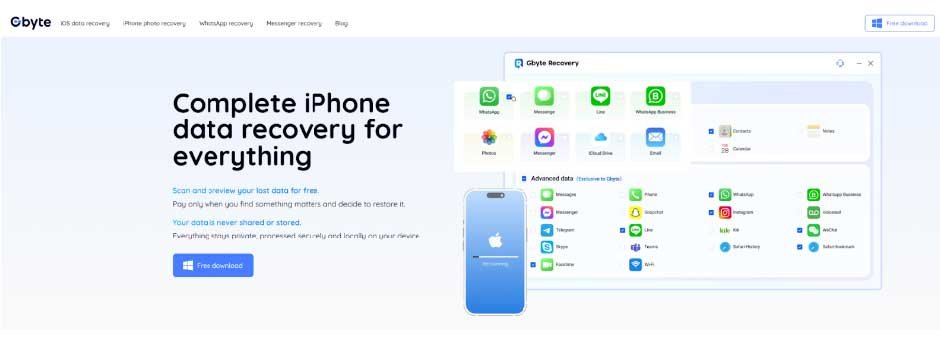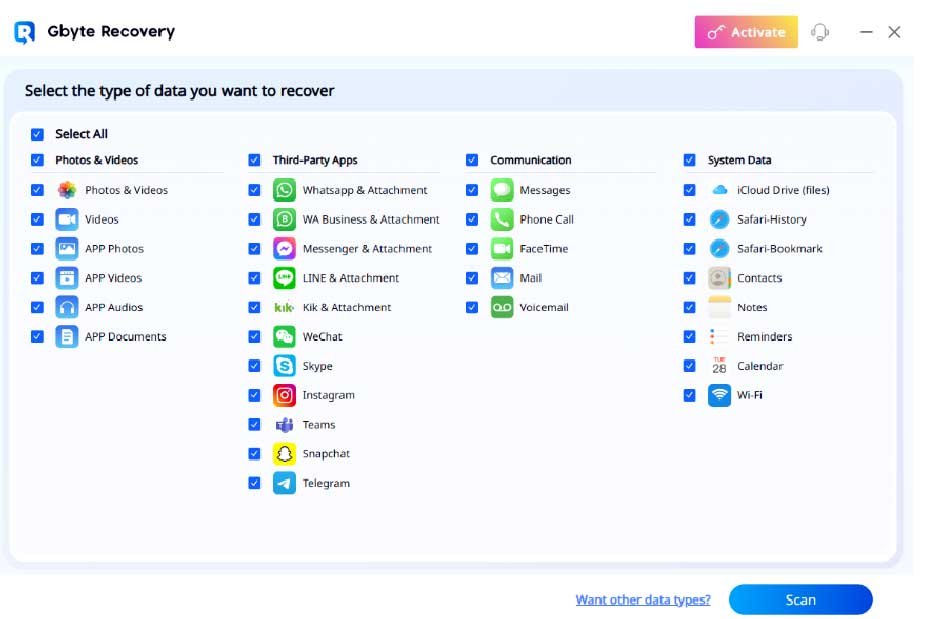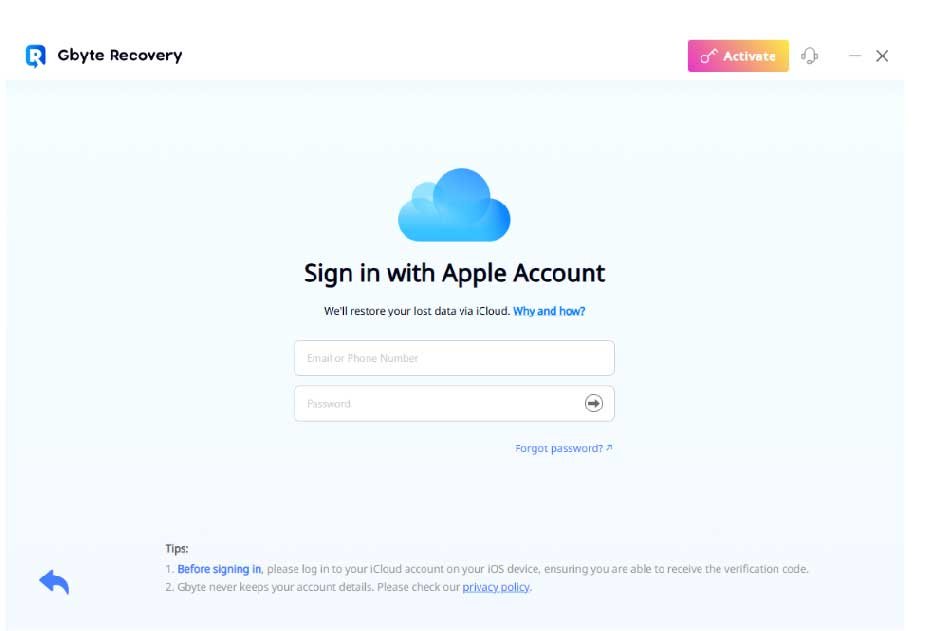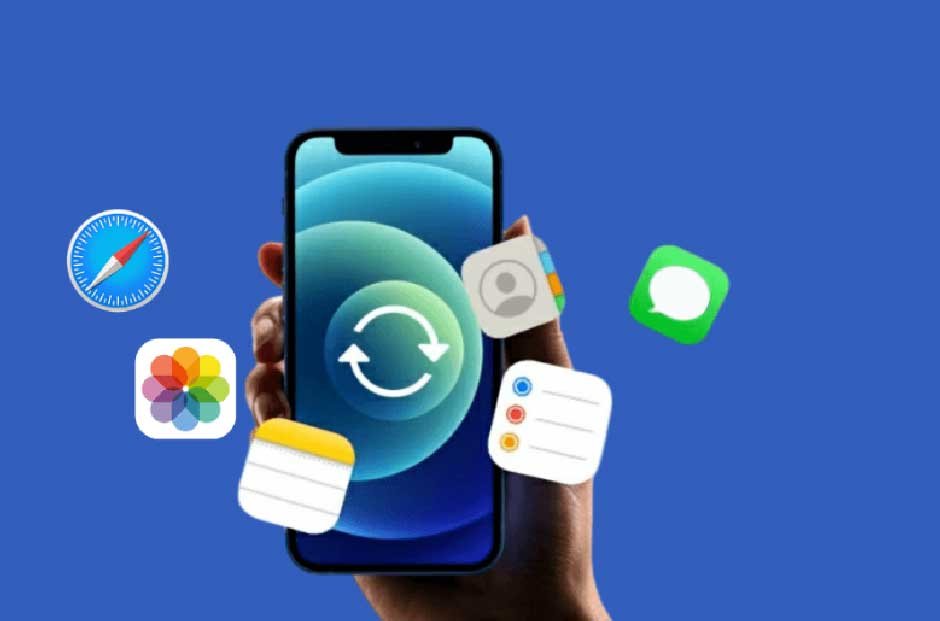Skip to the good bit
ToggleLosing important data on your iPhone can be stressful. Whether it’s cherished photos from a vacation or critical text messages for work, accidental deletion or system errors can make your data seemingly vanish. Fortunately, with the right tools and methods, you can recover these files efficiently. In this guide, we will show you how to use Gbyte Recovery to recover your iPhone photos and messages, ensuring minimal hassle and maximum data safety.
Understanding iPhone Data Loss
Before diving into recovery solutions, it’s essential to understand why iPhone data gets lost. Common causes include:
- Accidental Deletion – Sometimes, we delete files unintentionally.
- iOS Update Errors – Updates may sometimes lead to data loss.
- System Crash – iPhones may occasionally fail, causing inaccessible data.
- Physical Damage – Broken devices may prevent access to stored data.
- App Malfunctions – Some apps may interfere with your files, especially photos and messages.
Regardless of the cause, a professional iPhone data recovery tool can make the process of retrieving your lost data straightforward.
Introducing Gbyte Recovery

Gbyte Recovery is a highly recommended iPhone data recovery tool that supports both photo and message recovery. Unlike generic solutions, it provides a comprehensive scanning mechanism to detect lost data, even from formatted or damaged devices. Its features include:
-
Deep Scanning of the iPhone Storage System
Gbyte Recovery performs a comprehensive, deep scan of your iPhone’s storage, going beyond surface-level searches. It can analyze hidden system files, caches, and even partially overwritten data to locate lost photos, videos, and messages. This thorough approach ensures that files deleted long ago or affected by system errors have a higher chance of being recovered successfully.
-
Recovery of Deleted Photos, Videos, and Messages
The software specializes in restoring multiple types of data, including images, videos, and message threads. Whether it’s precious memories captured in photos, important video recordings, or essential text conversations, Gbyte Recovery can retrieve them in their original quality. It supports a wide range of file formats, ensuring you don’t lose anything critical during the recovery process. This software can help you retrieve deleted text messages from your iPhone quickly and safely.
Key Strengths of Gbyte Recovery
-
Preview Before Recovery to Avoid Unnecessary File Restoration
Before restoring any file, Gbyte Recovery allows you to preview it in detail. This feature helps you confirm that the files are exactly what you want to recover, avoiding the clutter of unnecessary or duplicate files. Previewing also helps save time and storage space, making the recovery process more efficient and user-friendly.
-
Compatibility with Most iOS Versions
Gbyte Recovery supports almost all iOS versions, from older models to the latest releases. Whether your iPhone runs on iOS 12, iOS 15, or iOS 17, the software can seamlessly interface with the device to perform recovery. This broad compatibility ensures that users of all iPhone generations can benefit from the tool without worrying about version limitations.
-
User-Friendly Interface for Both Beginners and Advanced Users
Designed for accessibility, Gbyte Recovery provides an intuitive interface that guides you step by step through the recovery process. Beginners can easily follow on-screen instructions without prior experience, while advanced users have the option to adjust scan depth, select specific file types, and customize recovery settings for greater control. The combination of simplicity and advanced functionality makes it suitable for all types of users.
With Gbyte Recovery, you don’t need to worry about complex processes; the software guides you through each step, making the data recovery experience smooth and reliable.
Step-by-Step Guide
Step 1: Prepare Your iPhone for Recovery
Before running Gbyte Recovery, ensure your iPhone meets these basic requirements:
- Charge Your Device: A minimum of 50% battery is recommended.
- Avoid Further Data Overwriting: Do not add new files, take photos, or send messages until recovery is complete.
- Backup Important Existing Data: Use iCloud or iTunes to prevent additional data loss.
Once prepared, download and install the Gbyte Recovery software on your computer. For more information, visit the official site of the iPhone data recovery tool.
Step 2 : Select File Types

Select the file types you want to recover and click “Scan.”
Note:If the data type you need is missing, you can request it by clicking the “Want other data types?” link beside the “Scan” button. This will open a feedback form where you can submit your request.)
Step 3: Sign in with Apple Account

To access the data stored in your iCloud, you must sign in with your Apple account. This step ensures that the software can securely retrieve your information. Enter your Apple ID and password carefully, making sure there are no typos. It’s important to use the account that is associated with the device or data you want to recover.
Step 4: Authenticate Your Sign-in
Enter the verification code sent to your device and complete any required authentication to log into iCloud.
Step 5: Check Scan Progress and Preview Data
Once the scan reaches 100%, a message will appear saying “Scan completed.” At this point, you can preview your data and select the items you want to recover.
If you wish, you can also add more unselected data by browsing through the available options on the left sidebar.
Common Issues and How to Avoid Them
Even with professional tools, users may face common obstacles during recovery:
- Device Not Detected: Ensure your iPhone is unlocked, and the cable is functioning correctly. Reinstall iTunes if necessary.
- Slow Scanning: Large storage or many deleted files can slow down the scan. Close unnecessary applications to speed up the process.
- Incomplete Recovery: Not all deleted files may be recoverable. Act quickly after deletion for the best results.
Remember, early intervention is key. The sooner you attempt recovery after accidental deletion, the higher the chances of successful retrieval.
Best Practices for Future Data Protection
While Gbyte Recovery is reliable, prevention is always better than a cure. Here are some best practices to minimize future data loss:
- Regular Backups: Use iCloud or iTunes to back up your iPhone regularly.
- Cloud Storage for Photos: Apps like Google Photos or Dropbox ensure that even if your iPhone fails, your photos remain safe.
- Careful App Management: Avoid apps with poor reviews or high permissions that may interfere with your iPhone’s data.
- Update iOS Cautiously: Always back up before updating iOS to prevent update-related data loss.
Conclusion
Losing your iPhone photos and messages can be stressful, but with the right approach, recovery is entirely possible. Gbyte Recovery stands out as a trusted iPhone data recovery tool, offering a user-friendly interface, reliable scanning, and effective restoration of deleted photos and messages.
By following the steps outlined in this guide—preparing your device, scanning with Gbyte Recovery, retrieving deleted messages, and backing up recovered files—you can minimize data loss and restore your iPhone to its full state.
Whether you need to recover precious memories or critical messages, Gbyte Recovery makes the process simple, secure, and efficient. Act now to protect your data, and ensure that accidental deletions or system failures never permanently affect your iPhone again.







